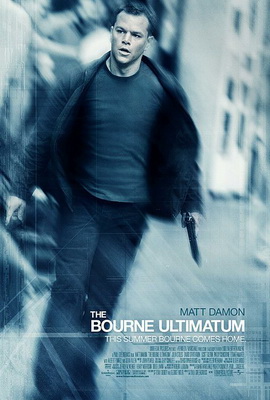Mad Cutting Rates
Special Bonus Entry! (Via The A.V. Club)
Vashi Neodomansky tried an experiment- he played five movies The Bourne Ultimatum, Mad Max: Fury Road, Domino, Taken 3, and Resident Evil: Apocalypse at 12x normal speed, and created this video to let you watch them all simultaneously. Turns out Mad Max is surprisingly legible.[ref]A brief aside- one of the first films we saw in my first film analysis class in college was a similar effect created from Rear Window. Supposedly, a mathematical algorithm was used to select four (or eight?) frames from each scene. Some were even rotated to be upside down. The same filmmaker did the same thing with Lawrence of Arabia. I have no idea what the point of all of it was.[/ref]
There might be some bias here- I’ve seen Ultimatum, but not recently, and I haven’t seen the other three. I couldn’t begin to tell you what was going on there.[ref] Also, Mad Max is right in the center, making you want to pay more attention to it.[/ref] Even so, it’s a tribute to how carefully the shots are composed that you can still glean the story from them.
 When The Bourne Ultimatum came out, there was much comment about how its fast editing and handheld camera made some audiences nauseous, especially when seeing it on a large IMAX screen. Film theorist David Bordwell noted at the time that it’s a textbook example of what he calls intensified continuity- regular continuity editing, but faster, more intense.[ref]In a nutshell, each shot conveys exactly one piece of information- Character A starts talking CUT TO B glancing at desk CUT TO Name on dossier CUT TO B looking up at CUT TO A delivering the last of his exposition.[/ref]
When The Bourne Ultimatum came out, there was much comment about how its fast editing and handheld camera made some audiences nauseous, especially when seeing it on a large IMAX screen. Film theorist David Bordwell noted at the time that it’s a textbook example of what he calls intensified continuity- regular continuity editing, but faster, more intense.[ref]In a nutshell, each shot conveys exactly one piece of information- Character A starts talking CUT TO B glancing at desk CUT TO Name on dossier CUT TO B looking up at CUT TO A delivering the last of his exposition.[/ref]
Intensified continuity seems to be a universal phenomenon. Movies of almost every kind are edited faster than they used to before the 1960s, and there’s less variation in the style that you see. Before then, sure, an action movie might have an average shot length around 4-5 seconds,[ref]Most of Neodomansky's examples seem to be in the 2-3 second range.[/ref] but a screwball comedy might be 8, 10, or even 15 seconds. Now even our rom coms are cut like action movies.
The handheld camera added to this- shots are composed closer to the edge of the frame than we’re used to, they rarely hold steadily on a subject, and what we’re looking at often racks in and out of focus. It’s messier than we’re used to, but not unprecedented.
Domino seemed to be going for a similar feel, but also playing with color in a way that set it apart.[ref]More on that in another entry…[/ref] The others I suspect use any shaky camera they have to hide their stunt doubles. For a more egregious example, check out this entry from DB.
 Note that Mad Max, which put particular emphasis on its practical stunts, provides wider, unobstructed views of what’s going on.
Note that Mad Max, which put particular emphasis on its practical stunts, provides wider, unobstructed views of what’s going on.
The other thing that struck me was how well modulated Mad Max is. I’ve seen it described as one long car chase, which it is, to an extent, but there are slow sections to it as well. These pauses in the action, and longer shots that accompany them, make the choppy moments feel that much punchier when they happen.
You’ll see this right away when Neodomansky’s video starts- watch how everyone else jumps through their logos and dives right into the first scene while we slowly track in on a long shot of Max.
I don’t want to argue that every movie (or even every action movie) needs to be edited like Mad Max: Fury Road. There should be room for variation, as we saw before the 1980s and 90s. I am glad though, to see such a high level of craftsmanship, and, for this day and age, experimentation, get the recognition it deserves.
